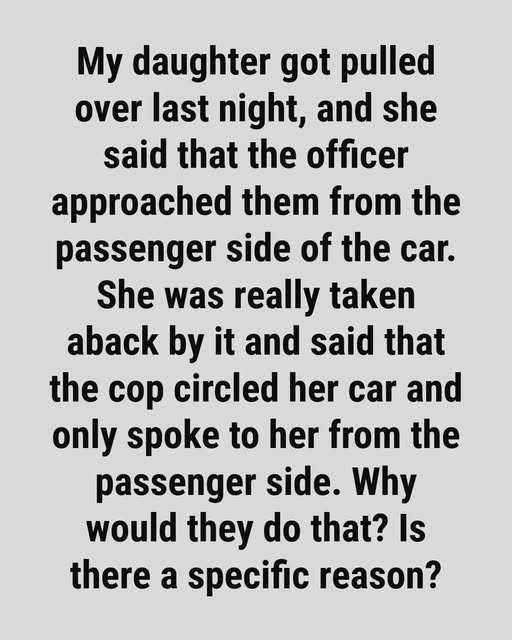Few experiences trigger instant nervousness like spotting the red and blue flashing lights of a police vehicle in your rearview mirror. Even experienced, calm drivers can feel a surge of anxiety at that moment, with adrenaline spiking, hearts racing, and minds whirling with questions: “What did I do wrong? Am I in trouble?” While such moments often feel sudden or targeted, traffic stops are not random acts—they are structured, well-planned procedures designed to maintain safety for both drivers and law enforcement officers. By understanding the process, drivers can reduce stress, act confidently, and ensure a smoother interaction during a traffic stop.
Preparation Begins Before the Stop
Contrary to what many may assume, traffic stops are the result of careful preparation, not impulsive decisions. Even before activating lights and sirens, officers perform critical checks in real-time. Using license plate information, they verify whether a vehicle is stolen, whether registration is current, or if the driver has outstanding warrants. These quick database queries allow officers to plan the stop safely, ensuring that risks are minimized for everyone involved.
In addition to verifying the vehicle and driver’s details, officers communicate with dispatch, providing essential information such as the car’s make, model, color, and license plate number. Dispatch can alert other units if necessary, offering backup in case the situation might be risky. Officers then select a location to execute the stop carefully. This is rarely arbitrary: ideal locations are well-lit, provide sufficient space to pull over safely, and have low traffic congestion. The goal is not to inconvenience drivers but to create a controlled environment where safety is the top priority.
Vehicle Positioning and Approach
Once a driver safely pulls over, the position of the patrol car plays a critical role in officer safety. Typically, officers do not park directly behind the vehicle. Instead, they park slightly offset, creating space for safer movement, shielding themselves from oncoming traffic, and enhancing visibility of the car and its occupants. Some officers may also angle their wheels outward, a precaution that allows for quick movement if needed.
As the officer approaches the vehicle, they conduct a careful visual scan of the interior. This includes observing passengers, looking for any visible weapons, and checking for unusual movements. Some officers place a hand on the back of the car to leave a fingerprint—a small but important measure that records their presence at the scene. These actions may feel unusual to drivers but are standard safety protocols designed to protect both the officer and the public.
Interaction at the Driver’s Window
When officers reach the driver’s side, standard instructions are usually issued. Drivers are typically asked to:
- Turn off the engine
- Roll down the window
- Present their driver’s license, registration, and proof of insurance
Officers may repeat questions or speak separately to passengers. These measures are not a reflection of mistrust but are structured steps to assess the situation thoroughly. Compliance and cooperation from drivers help ensure that the interaction remains calm, safe, and efficient.
For drivers, certain behaviors can significantly reduce tension during a stop. Keeping hands visible on the steering wheel, remaining patient, and following instructions promptly helps maintain a cooperative atmosphere. The interaction is safest when both the officer and the driver understand their shared responsibility for safety.
Understanding the Traffic Stop Sequence
Traffic stops typically follow a predictable sequence, though the details may vary depending on circumstances:
- Lights and Sirens: These are signals for caution, not accusations. They alert the driver to pull over safely.
- Vehicle Check: Officers may already have gathered background information via license plate queries.
- Location Selection: Officers choose a safe location to conduct the stop.
- Approach: The officer carefully approaches the vehicle, observes passengers, and looks for potential hazards.
- Driver Interaction: Standard requests for documentation and answers to basic questions.
Most stops are brief, often lasting only a few minutes. They may conclude with a verbal warning, citation, or simple exchange of documents. Understanding this process can reduce fear, prevent misunderstandings, and give drivers a sense of control.
The Officer’s Perspective
It’s essential for drivers to recognize that the primary objective of a traffic stop is not to punish but to ensure safety. Officers are trained to manage risks, assess compliance, and protect everyone involved. Viewing the interaction as a cooperative safety measure can significantly change the driver’s perception. Instead of feeling singled out, drivers can see the experience as part of maintaining road safety.
Politeness, patience, and attentiveness can make the stop more efficient. A calm, respectful demeanor often leads to quicker resolutions and fewer complications. By understanding the officer’s role, drivers can contribute positively to the encounter.
Tips for Drivers to Stay Safe and Calm
- Stay Alert: Regularly check mirrors and be aware of traffic flow to anticipate situations that may require pulling over.
- Follow Instructions: Simple compliance, such as turning off the engine and showing documents, keeps the stop smooth.
- Keep Hands Visible: This reduces officer concern and enhances safety for everyone.
- Avoid Sudden Movements: Quick or unexpected movements can be misinterpreted.
- Be Patient and Polite: Cooperation often leads to shorter stops and a better experience for both parties.
- Know Your Rights: Understanding traffic laws and personal rights can help drivers navigate stops confidently, without confrontation.
Common Misconceptions About Traffic Stops
Many drivers experience anxiety because they perceive stops as personal or punitive. However, traffic enforcement is largely procedural and safety-focused. Here are some misconceptions:
- “I’m being targeted.” In reality, officers use objective criteria such as traffic violations or safety concerns.
- “The officer is suspicious of me personally.” Stops are about the vehicle and road safety, not the individual driver’s character.
- “I must speak more than necessary.” Drivers can respond politely and succinctly without providing unnecessary information.
Understanding these points can reduce panic and allow drivers to act calmly during the stop.
What Happens After the Stop?
After the stop concludes, drivers may receive a warning, citation, or other instructions. Most interactions are resolved quickly, and officers often return to patrol without incident. Drivers should:
- Keep any documents provided during the stop for future reference
- Review the situation calmly if a citation is issued
- Maintain a positive approach to future interactions
Reflecting on the stop as a learning experience can help drivers improve safety habits and reduce anxiety in subsequent encounters.
Final Thoughts
Being pulled over is rarely a pleasant experience, but it doesn’t need to be stressful or confrontational. Understanding the careful planning, procedures, and rationale behind traffic stops can empower drivers, reduce anxiety, and foster safer road interactions. By staying calm, keeping hands visible, and following instructions, drivers help officers maintain safety while protecting themselves.
Traffic stops are routine events designed with caution, preparation, and safety in mind. When approached with understanding, patience, and respect, they can be brief, secure, and even educational. Recognizing the structured approach behind each step allows drivers to remain composed, cooperate effectively, and appreciate the officer’s critical role in public safety.



